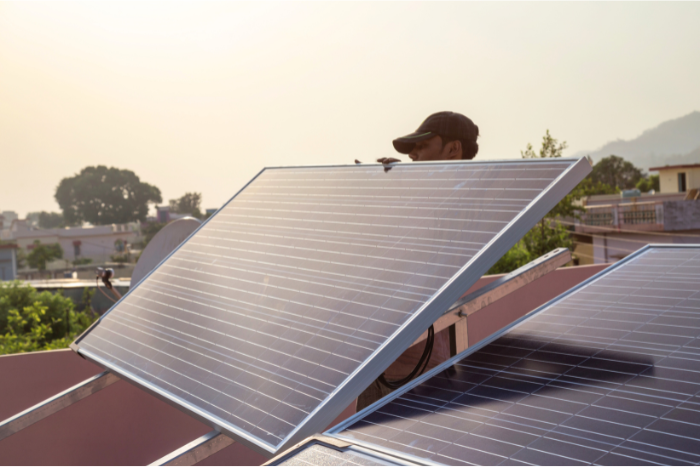In the first 6 months of 2024 India added 1.1 GW of rooftop solar capacity, as per Marcom findings. This was a 26% increase from the 873 MW installed in the same period in 2023. The surge followed the announcement of PM Surya Ghar: Muft Bijli Yojana. In Q2 2024, rooftop solar tenders totaling 533.6 MW were issued, about a 35% drop from 816.9 MW in Q1 2024 but a 259% increase from 148.6 MW in Q2 2023, Mercom reported,
The residential sector’s contribution rose around ten-fold from the previous quarter. Mercom pointed out that there was a critical need to maintain the quality of installations, particularly in the residential sector, where homeowners often lack the expertise to assess the quality of the installations. The outlet said the average cost of rooftop solar systems rose by over 12% QoQ, ending a six-quarter trend of declining prices, although costs were still down nearly 10% YoY.
As of June 2024, India’s cumulative installed rooftop solar capacity reached 11.6 GW. Gujarat, Maharashtra, Rajasthan, Kerala, and Karnataka maintained top installed capacity.
Demand for household rooftop solar scheme spark solar inverter shortage
Government’s rooftop solar scheme announced in February 2024, is causing a shortage of string inverters (used to convert direct current of solar energy to usable alternative current), reported Mercom.
The demand has risen by 300% since the introduction of the scheme aimed at installing solar systems on the rooftops of 10 million households by 2026-27. The latest subsidy programme has seen a 170% increase in applications between February and June 2024, reaching 14.8 million by June, the report said.
The report said Indian players procure inverters from China and assemble them in India. The smaller 3.3 kW and 5.3 kW systems are moving fast. There is a slow supply from Chinese manufacturers, as deliveries take nearly 1.5-2 months to reach India. According to Mercom nearly 90% of components used in inverters are imported from China.
India to add 21.5 GW of new PV capacity in 2024: JMK Research
India is set to install about 21.5 GW of new solar capacity in 2024. About 16.5 GW will likely come from utility-scale PV installations, on top of 4 GW of rooftop solar and 1 GW of off-grid systems, says latest analyses by JMK Research.
The report by PV magazine said JMK Research expects higher installation activity, projecting about 6.9 GW of solar additions over the next two quarters. The JMK analysts said that approximately 110.6 GW of solar, wind, wind-solar hybrid, and storage projects are in the pipeline, with commissioning expected within the next four to five years. An additional 71.4 GW of projects are in the bidding phase, where tenders have been issued but auctions remain incomplete.
New entrant in ALMM, India adds 4 GW solar module capacity
The Centre expanded the Approved List of Models and Manufacturers (ALMM), adding 4,089 MW of new solar module capacity, reported Mercom. It added that the cumulative module manufacturing capacity under ALMM now stands at 54,706 MW.
New entrants included Avaada Electro, Laxmi Solar, Uratopm Solar accounting accounting for 554 MW, 121 MW, and 46 MW, respectively, the outlet said pointing out that Tata, Jakson Engineers and SASA Energy increased their enlisted capacity by 2,697 MW, 662 MW, and 9 MW, respectively.
Government also revised the ALMM guidelines for the inspection and final enlistment of provisionally listed manufacturers. According to the new rules, the final enlistment must be completed within two months of the application. If the National Institute of Solar Energy (NISE) has conducted the inspection but MNRE has not yet received the recommendation, the provisional enlistment will automatically become final after two months
About The Author
You may also like
Non-Fossil Fuels Generates One-Third of India’s Electricity in 2025
India on track to achieve 2030 clean energy target
India to add 45GW solar capacity in FY 2026: Study
Government Proposes for ALMM Expansion for Solar Backward Integration
China’s renewable energy expansion can fuel global energy transition: Report

